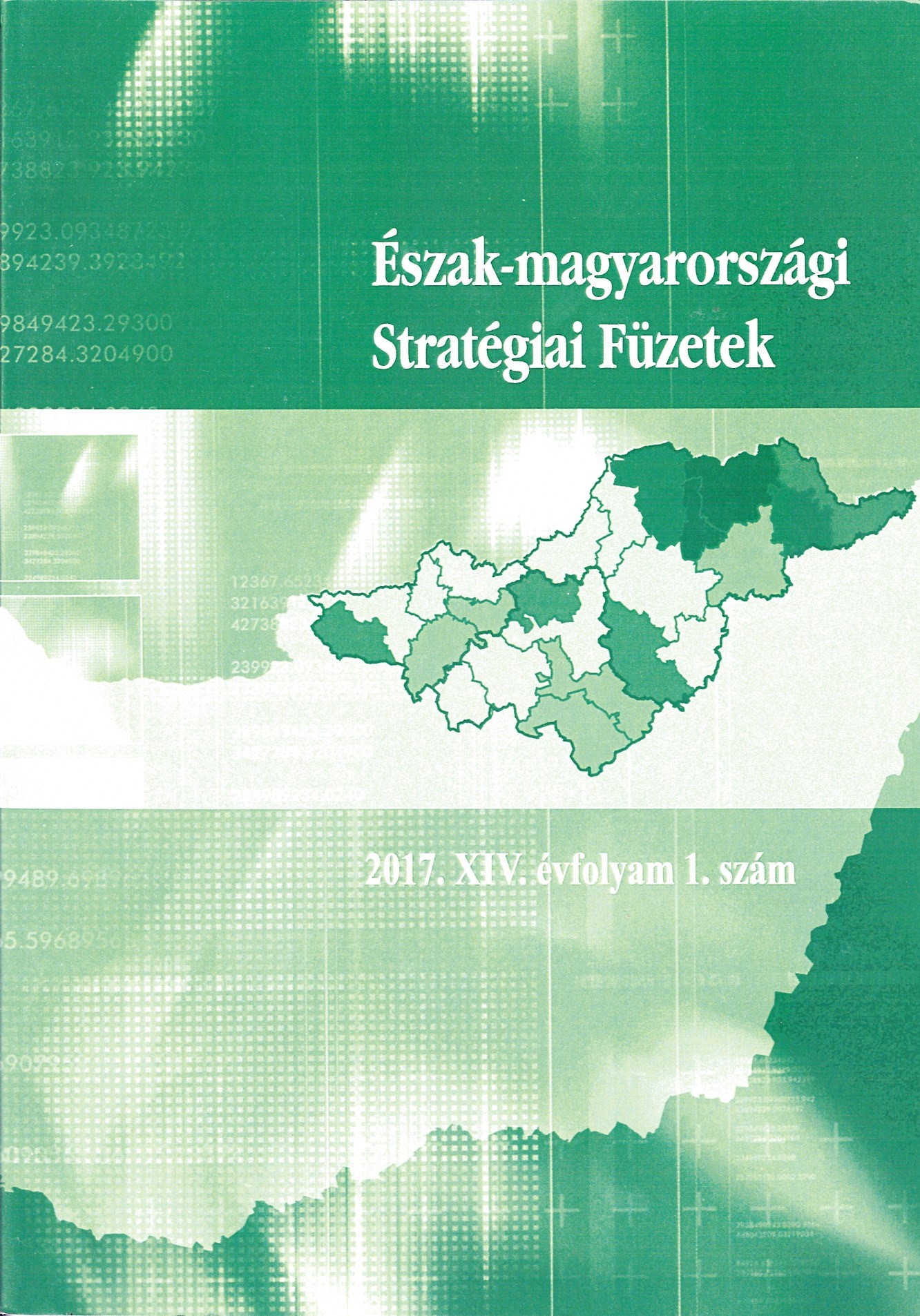Fókuszban a társadalmi innováció folyamata a magyar vidéken
Kulcsszavak:
társadalmi innováció folyamata, miért-hogyan-mi, vidékfejlesztés, LEADER programAbsztrakt
A társadalmi innováció egyre nagyobb figyelmet kap nem csak a szakirodalomban, a közéletben, hanem a vidékfejlesztési gyakorlatban is. A társadalmi innovációt vizsgáló szakirodalmi megállapításokra építve a tanulmány néhány esettanulmány ismertetésén keresztüla vidéki Magyarországon végbe menő társadalmi innovációs folyamatok bemutatását célozza meg. A kutatás abból a hipotézisből indul ki, hogy a társadalmi innováció gyakorlatának alaposabb ismeretével növelhető és hatékonyabbá tehető a vidék fejlesztésében történő alkalmazása. Négy különböző, társadalmi innovációt megvalósító példát vizsgáltunk a magyarországi vidéki térben. A vizsgálatunk azt mutatja, hogy a közös elemek ellenére, a társadalmi innováció nagymértékben függ a környezettől, valamint az innovációt aktívan kezdeményező és végrehajtó személytől. Az innovatív kezdeményezések életképessége és fenntarthatósága érdekében fontos tényező még a projekt köré tömörülő szereplők kapcsolatának intézményesítése, azaz egy olyan keret létrehozása, mely az innovatív ötlet megszületésétől a termékfejlesztésen át annak menedzselésével is foglalkozik. A kutatás során körvonalazódott, hogy a társadalmi vállalkozás, mint működési forma, megfelelő keretet adhat a sikeres társadalmi innovációhoz.
Hivatkozások
BOCK, B.B. (2012): Social innovation and sustainability; how to disentangle the buzzword and its application in the fi eld of agriculture and rural development. Studies in Agricultural Economics 114 (2), 57-63. Elérhető: http://dx.doi.org/10.7896/j.1209 letöltés dátuma: 2016. 05. 09.
BODÓ, P. (2015): Magyar Telekom – Szívlapát Alapítvány – Szent István Egyetem ESSRG: Jövő/Menő program, in L. Radics, Üzleti és civil szervezetek együttműködése Magyarországon. Győr, Hungary: Publio Kiadó.
DARGAN, L. -SHUCKSMITH, M. (2008): LEADER and innovation. Sociologia Ruralis 48(3), 274-291. Elérhető:http://dx.doi.org/10.1111/j.1467-9523.2008.00463.x letöltés dátuma: 2015. 11. 19.
EISENHARDT, K.M. (1989): Building theories from case study research. Academy of Management Review 14(4), 532-550.
GARCIA, M.E. (2012). Local Networks and Socially Innovative Territories. The case of the Basque Region and Goierri County. PhD Thesis. Bilbao: Universidad de Deusto.
GIBSON-GRAHAM, J.K. and Roelvink, G. (2009): Social innovation for community economics, in F. Moulaert, D. MacCallum, J. Hillier and S. Vicari (eds), Social innovation and territorial development. Aldershot: Ashgate, 25-38.
G. FEKETE, É. (2015): Társadalmi innovációk a helyi foglalkoztatásban in K. Lipták (ed.), proceedings of ‘Balance and Challenges’, the 9th international scientific conference, Miskolc-Lillafüred, Hungary, 15-16 October 2015, 274-287.
HEINRICH, V.F. (2001): Assessing the Strengthening Civil Society Worldwide. A Project Description of the CIVICUS Civil Society Index: A Participatory Needs Assessment & Action-Planning Tool for Civil Society. CIVICUS Civil Society Index Paper Series 2(1).
KATONA-KOVÁCS, J., High, C. and Nemes, G. (2011): Importance of Animation Actions in the Operation of Hungarian Local Action Groups. European Countryside 3 (4), 227-240. Elérhető: http://dx.doi.org/10.2478/v10091-012-0006-7 letöltés dátuma: 2016. 02. 23.
LAWRENCE, T.B., Dover, G. and Gallagher, B. (2013): Managing Social Innovation. The Oxford Handbook of Innovation Management. Oxford: Oxford Handbooks Online.
LUKESH, R. (2007): The LAG-Handbook. A guide through the stunning world of local action groups. Brussel: Leader+ Observatory Contact Point.
MAXI-PEDIA (2015): IFE Matrix (Internal Factor Evaluation) [www document]. http://www.maxi-pedia.com/IFE+EFE+matrix+internal+factor+evaluation (accessed March 2016).
MOULAERT, F. and Nussbaumer, J. (2005): The social region: beyond the territorial dynamics of the learning region. European Urban and Regional Studies 12, 45-64. Elérhető: http://dx.doi.org/10.1177/0969776405048500 letöltés dátuma: 2016. 02. 23.
PHILLS, J.A., Deiglmeier, K. and Miller, D.T. (2008): Rediscovering social innovation. Stanford Social Innovation Review 6(4), 33-43.
POL, E. and Ville, S. (2009): Social innovation: buzz word or enduring term? The Journal of Socio-Economics 38, 878-885. Elérhető: http://dx.doi.org/10.1016/j.socec.2009.02.011 letöltés dátuma: 2016. 03. 09.
PUE, K., Vandergeest, C. and Breznitz, D. (2015): Toward a Theory of Social Innovation. Innovation Policy Lab White Paper No. 2016-01. Available at Social Science Research Network.
SINEK, S. (2009): How great leaders inspire action [www document]. Elérhető: http://www.ted.com/talks/simon_sinek_how_great_leaders_inspire_action.html letöltés dátuma: 2013. 06. 11.
SMITH, K. (2000): Innovation indicators and the knowledge economy: concepts, results and policy challenges. Paper presented at the Conference on Innovation and Enterprise Creation: statistics and indicators, Sophia Antipolis, France, 23-24 November 2000.
VARGA, E. (2009): Non-profit Organisations in Hungarian Rural Development – A LEADER+ Example in the Southern Transdanubian Region. European Countryside 1 (2), 93-104. Elérhető: http://dx.doi.org/10.2478/v10091/009-0008-2 letöltés dátuma: 2016. 03. 09.
WEF (2013): The Future Role of Civil Society. World Scenario Series. Cologny/Genève: World Economic Forum.
##submission.downloads##
Megjelent
Hogyan kell idézni
Folyóirat szám
Rovat
License

This work is licensed under a Creative Commons Attribution-NonCommercial-NoDerivatives 4.0 International License.



